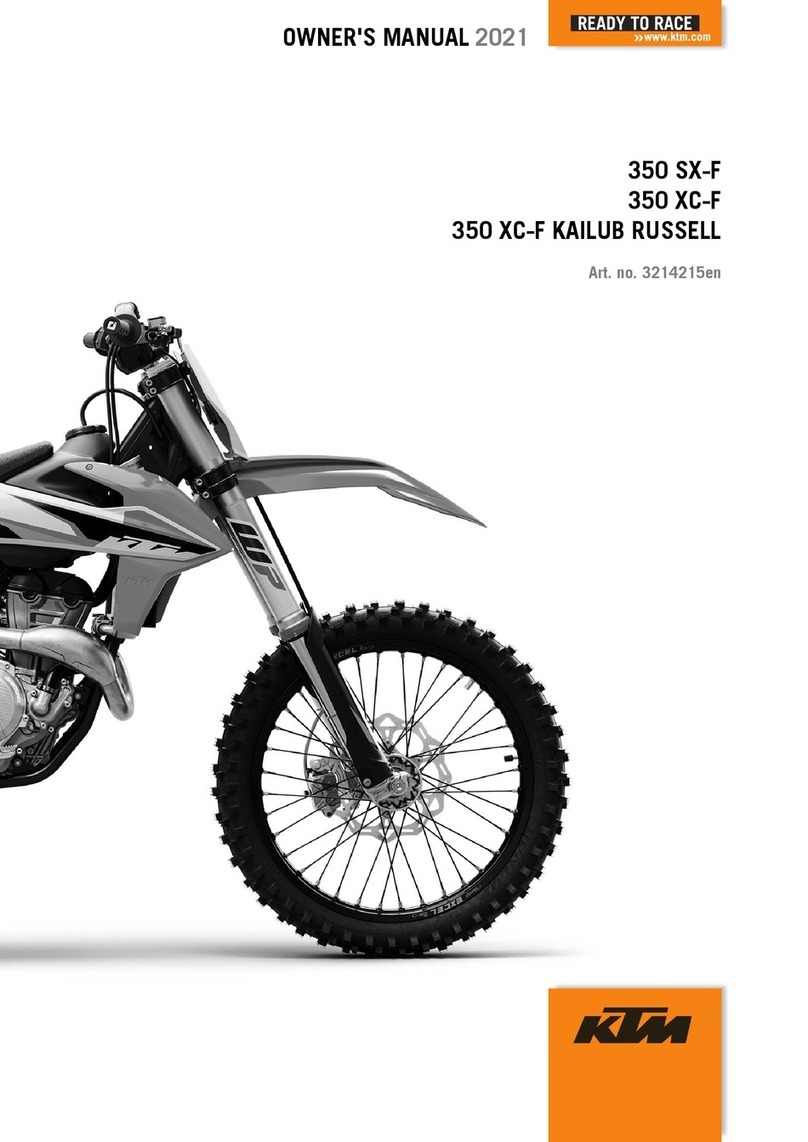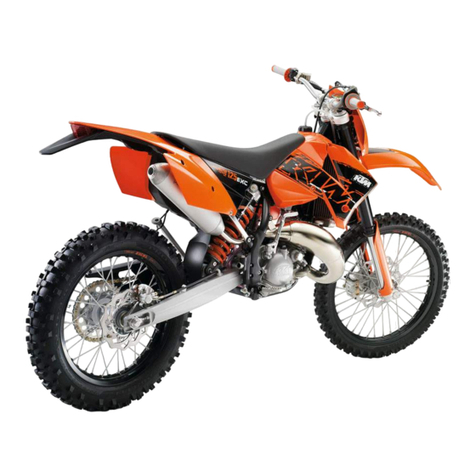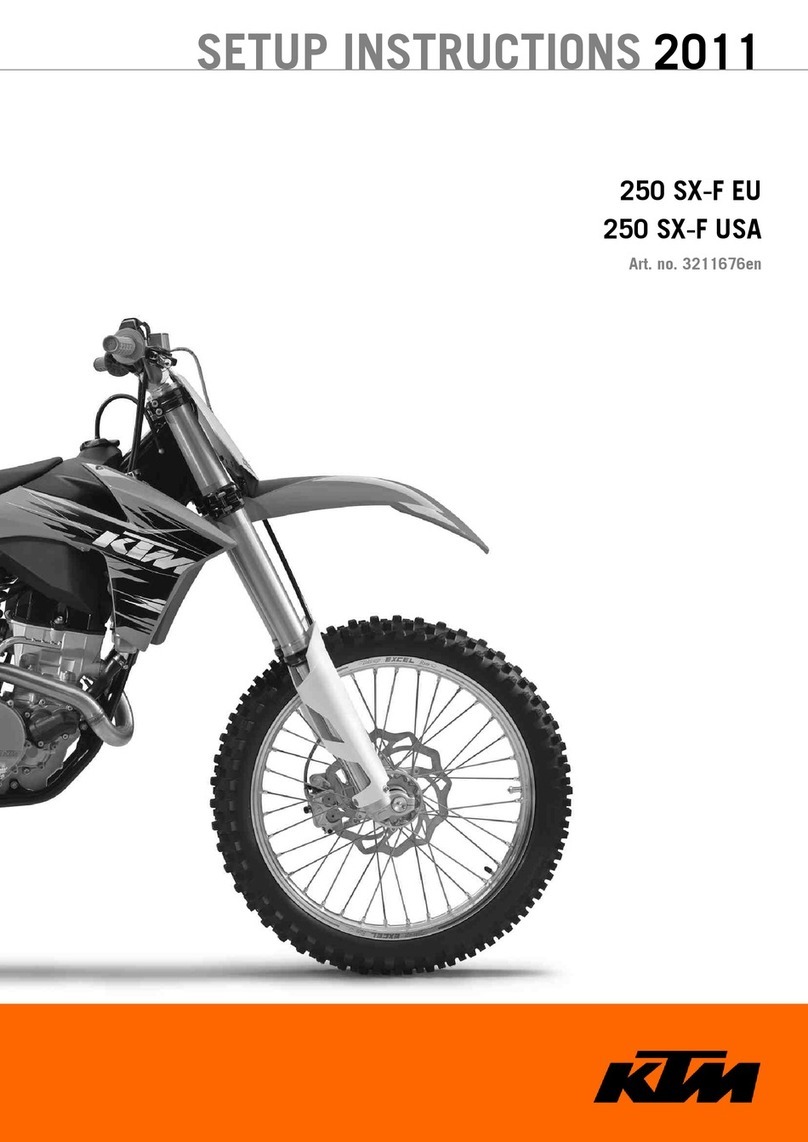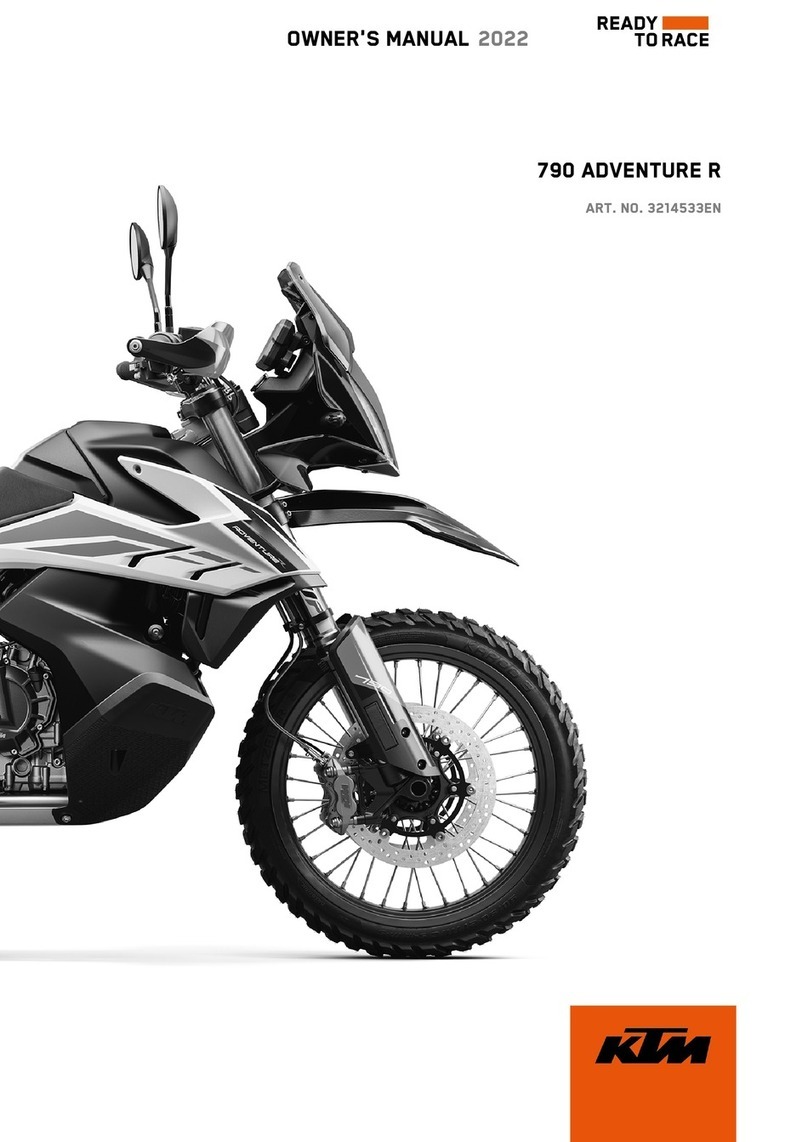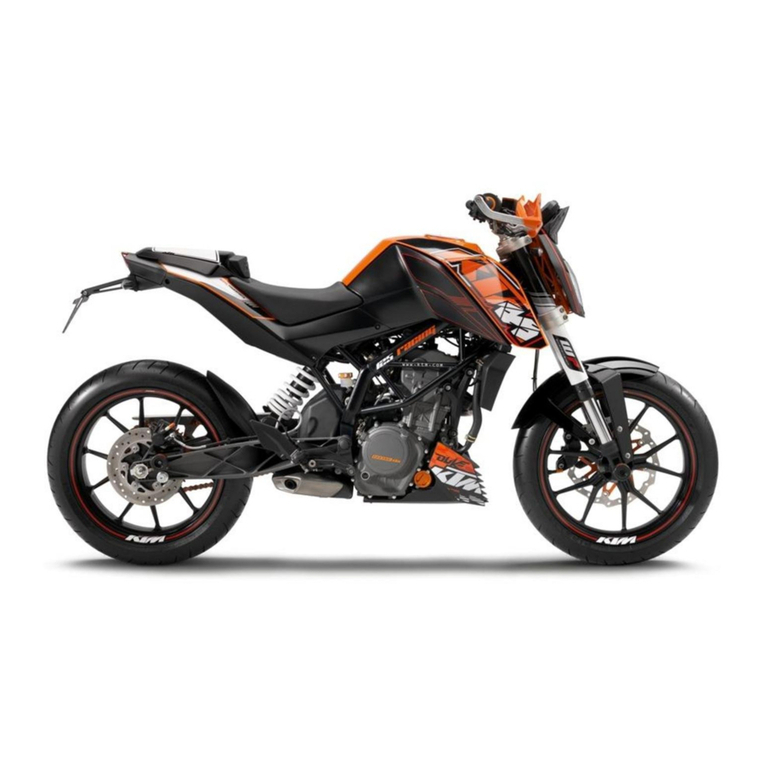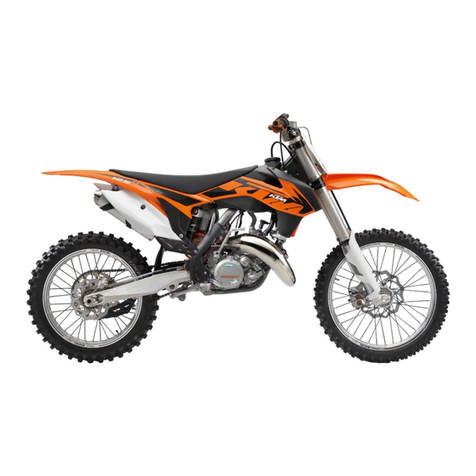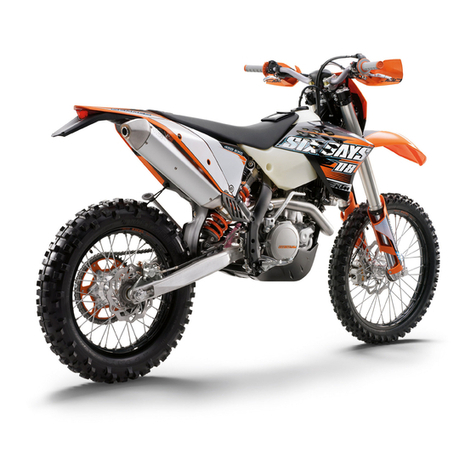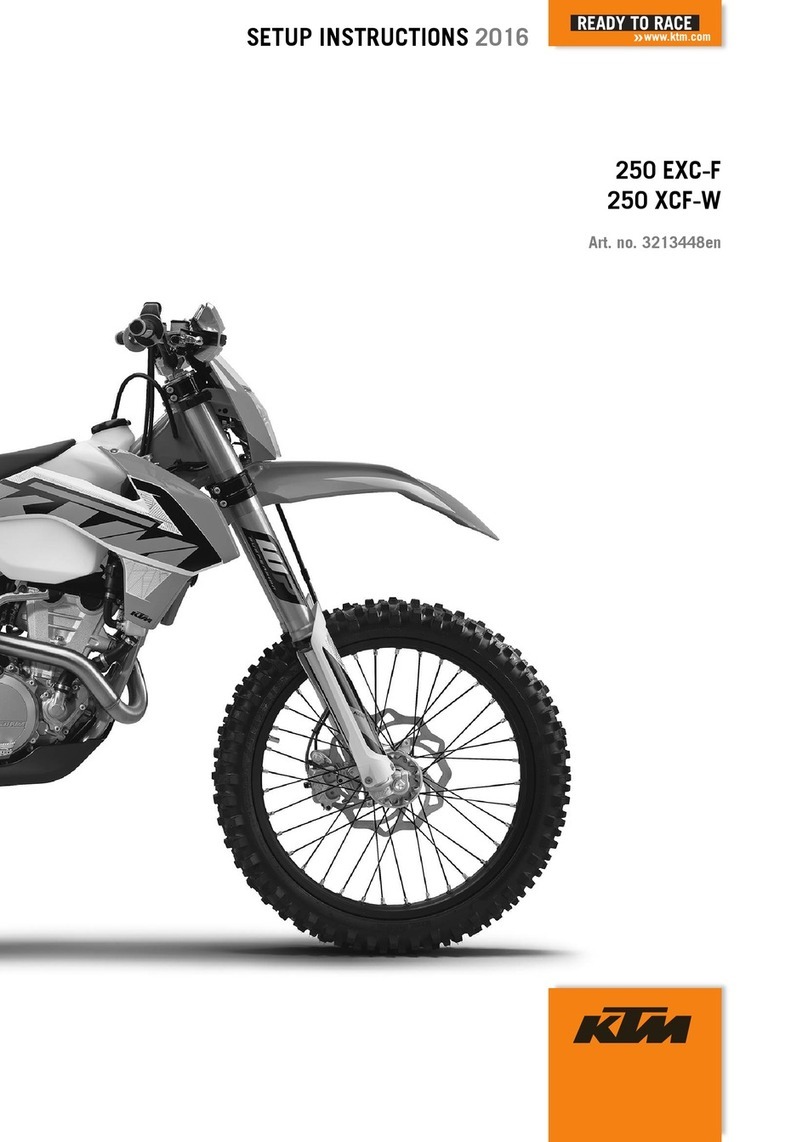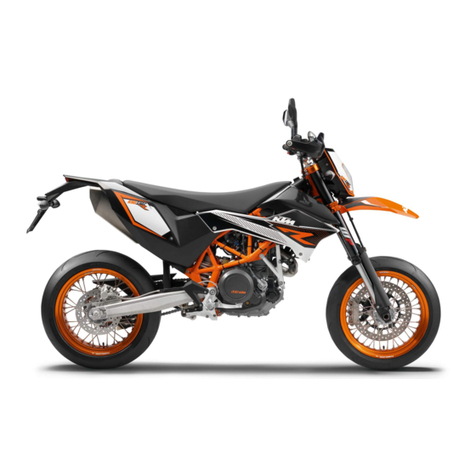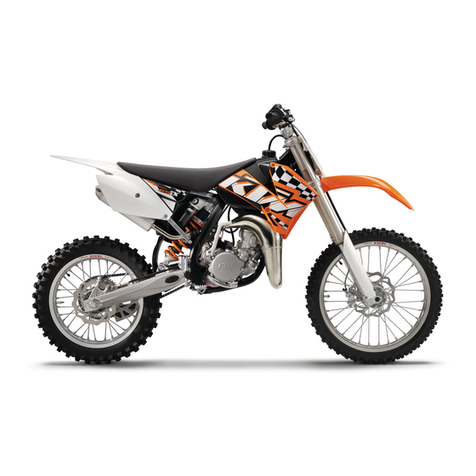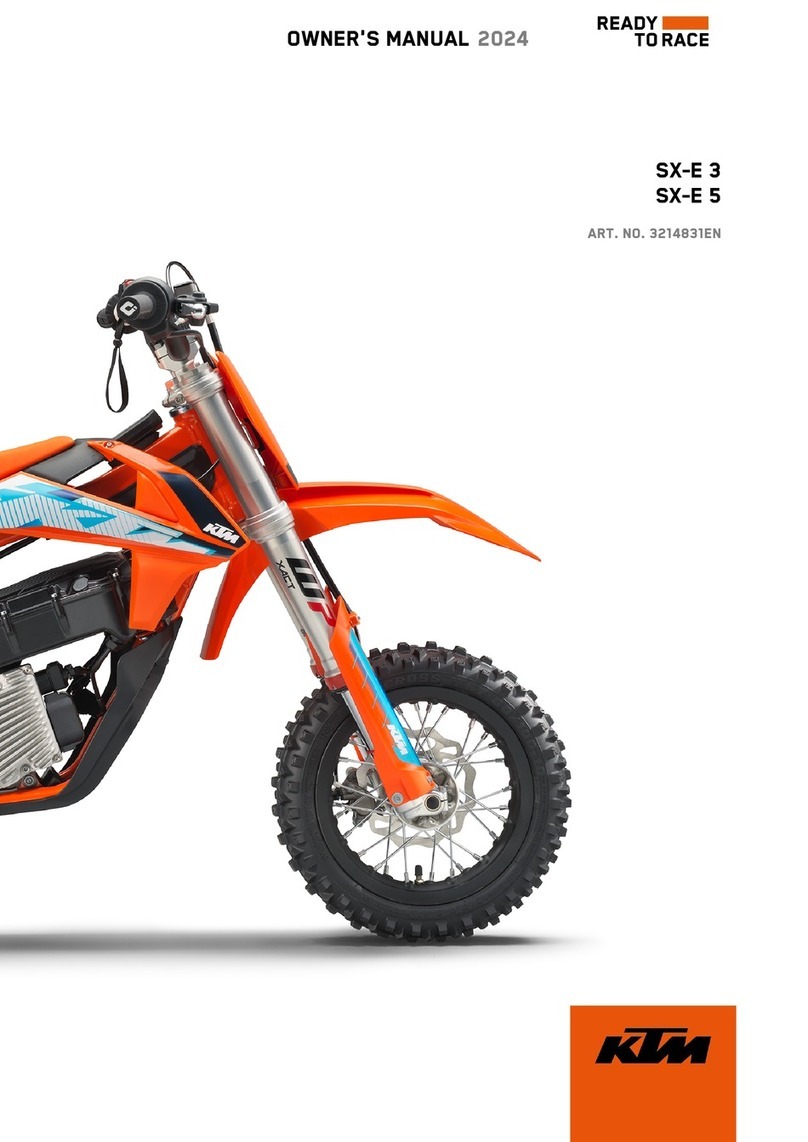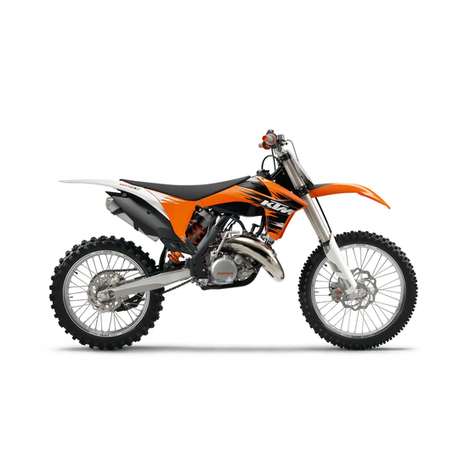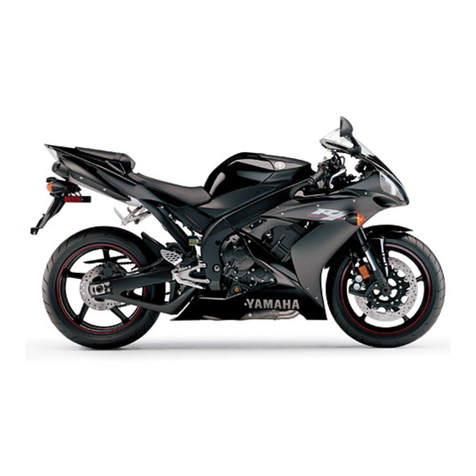ENGLISH
3
Page
SERIAL NUMBER LOCATIONS .............................................4
Chassis number ................................................................4
Engine number, engine type.............................................4
OPERATION INSTRUMENTS ...............................................4
Clutch lever ......................................................................4
Hand decompression lever................................................4
Hand brake lever..............................................................4
Indicator lamps.................................................................5
Electronic speedometer.....................................................5
Combination switch..........................................................5
Flasher switch...................................................................6
Filler cap...........................................................................6
Fuel tap............................................................................6
Choke ..............................................................................6
Shift lever .........................................................................6
Kickstarter ........................................................................7
Foot brake pedal ..............................................................7
Handlebar lock .................................................................7
Compression damping of fork ..........................................7
Rebound damping of fork ................................................7
Compression damping of shock absorber .........................8
Rebound damping of shock absorber ...............................8
GENERAL TIPS AND WARNINGS FOR STARTING THE
MOTORCYCLE.....................................................................9
DRIVING INSTRUCTIONS ..................................................10
PERIODIC MAINTENANCE-SCHEDULE ..............................13
MAINTENANCE WORK ON CHASSIS AND ENGINE ..........15
Removal of seat..............................................................15
Tool set ..........................................................................15
Breather plugs front fork ................................................16
Cleaning the dust sleeves of the telescopic fork ..............16
Check and adjust steering head bearing .........................16
How to change the handlebar position...........................17
Check/set distance of the magnetic sensor .....................17
Changing the spring preloading of the shock absorber ...17
Checking rubber ring on the WP rear shock absorber .....18
Lubricate rear suspension linkage ...................................18
Checking chain tension...................................................18
Correct chain tension......................................................18
Chain maintenance.........................................................19
Page
Chain wear.....................................................................19
General informations about KTM disc brakes..................19
Adjusting of free travel at the hand brake lever ..............20
Checking brake fluid level - front brake ..........................20
Refilling the front brake fluid reservoir............................21
Check the front brake pads ............................................21
Replacing front brake pads .............................................21
Changing the basic position of the brake pedal ..............22
Checking the rear brake fluid level..................................22
Refilling the rear brake fluid reservoir .............................22
Checking the rear brake pads .........................................22
Replacing the rear brake pads.........................................23
Dismounting and mounting the front wheel...................23
Dismounting and mounting the rear wheel.....................24
Checking the shock absorption rubbers in the rear hub ..25
Tires, air pressure............................................................25
Checking spoke tension..................................................25
Cooling system...............................................................26
Checking the coolant level..............................................26
Cleaning air filter ............................................................27
Exhaust system...............................................................27
Draining the float chamber of the carburetor..................27
Carburetor – Adjust idling...............................................28
Adjusting the mixture control screw ...............................28
Check float level.............................................................28
Adjusting the throttle cable ............................................29
Adjusting the clutch cable...............................................29
Checking the adjustment of the hand decompression cable
.....29
Engine oil .......................................................................30
Checking the engine oil level..........................................30
Oil circuit........................................................................30
Changing the engine oil .................................................30
Changing and bleeding the microfilter............................31
Changing oil filter...........................................................31
TROUBLE SHOOTING........................................................32
CLEANING..........................................................................34
CONSERVATION FOR WINTER OPERATION ....................34
STORAGE ...........................................................................34
Re-initation after time of storage....................................34
TECHNICAL SPECIFICATIONS - ENGINE ...........................35
TECHNICAL SPECIFICATIONS - CHASSIS...........................37
WIRING DIAGRAMME ..........................................APPENDIX
Index

